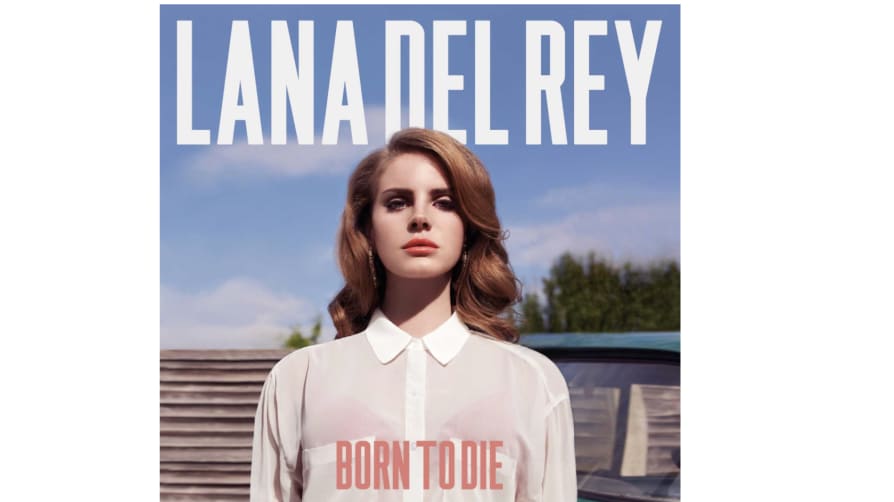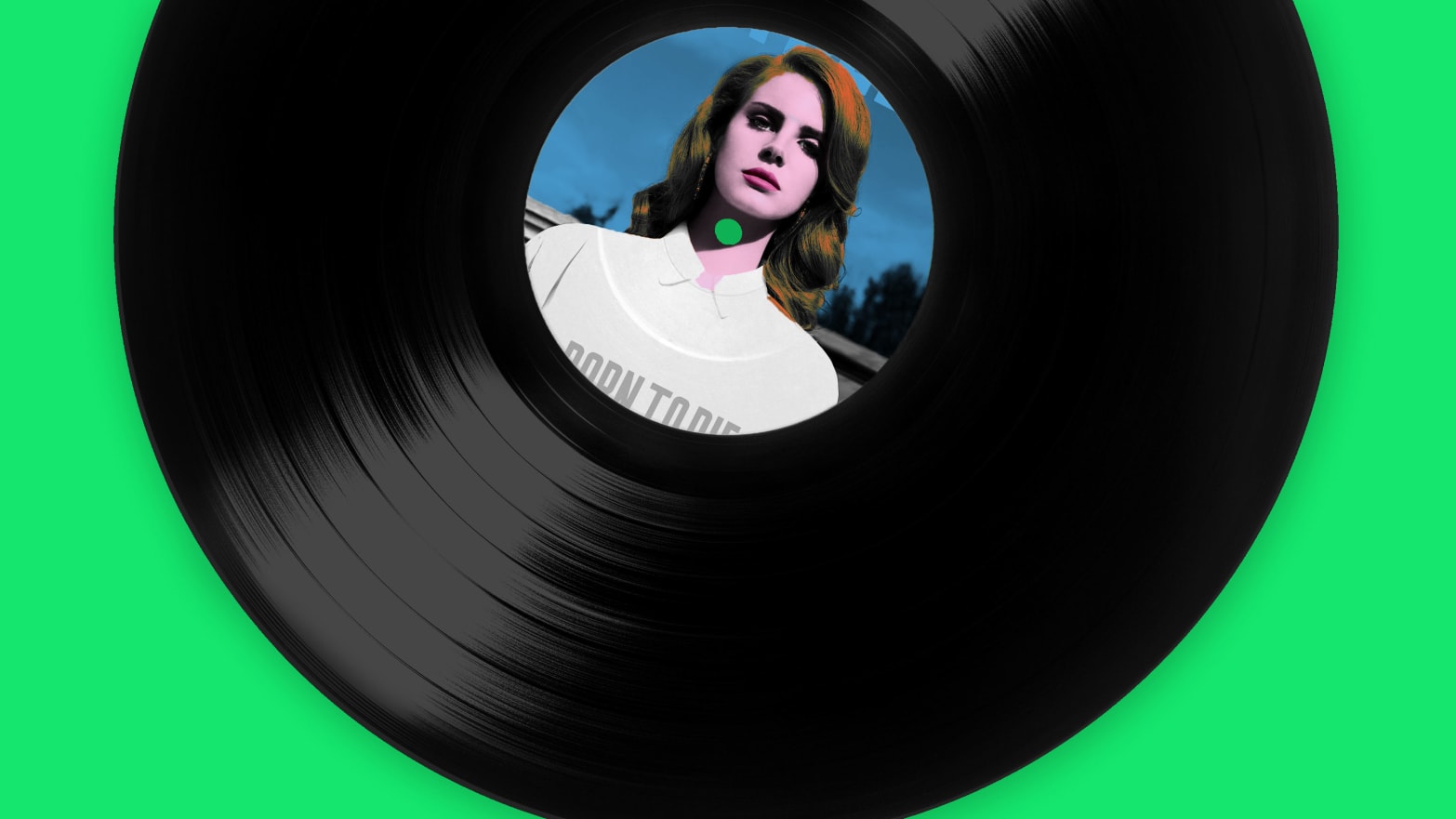Following her 2012 major-label debut Born to Die, Elizabeth “Lizzy” Grant (AKA Lana Del Rey) didn’t think she would write another record. “What would I say? I feel like everything I wanted to say, I’ve already said,” she contemplated in a cover story for British Vogue. It’s fitting for someone in their late twenties to assume they’ve seen all of life after a few heartbreaks and some experimenting with drugs and alcohol—let alone for someone like Del Rey, who famously stated on her album, among other grim proclamations, that she wished she was dead.
As we now know, that well of tragic lyrics has yet to run dry for the 36-year-old pop singer. Since her big coming-out party, Del Rey has found several albums, EPs, and poetry books of things to say, representing a melancholic era in pop music that, for better or worse, has yet to loosen its grip on the industry.
Ten years out from its polarizing debut, Born to Die has never felt more archeological. At the time of its release, Calvin Harris and Rihanna’s buoyant electronic collaboration “We Found Love” sat at the top of the Billboard Hot 100 chart. And bright, rollicking anthems like fun.’s “We Are Young,” Kelly Clarkson’s “Stronger (What Doesn’t Kill You),” Carly Rae Jepsen’s “Call Me Maybe,” and Taylor Swift’s “We Are Never Ever Getting Back Together” defined the year in popular music. In 2011, SPIN cited the ubiquity of EDM acts in Las Vegas, DJ-pop artist collaborations, and four-on-the-floor beats on the radio as evidence of a “new rave generation.” (Del Rey would eventually contribute to this phenomenon with a Cedric Gervais remix of “Summertime Sadness”).
Even with the singular blockbuster success of Adele’s moody 21, Del Rey’s bid for pop stardom appeared odd and disruptive to anyone not hip to the goings-on of Myspace and Tumblr and the soundscapes of chillwave. Mainstream radio was urging us to either fist-pump or belt our hearts out. Del Rey invited you to lounge on a pool chair, preferably next to a lover, and watch the world pass by.
At this point, most pop music enthusiasts are familiar with the story of Del Rey’s transition from struggling indie artist to viral sensation that’s been so heavily regurgitated it feels like pop music lore. Suffice it to say, witnesses and historians point to the musician’s homemade music video for Born to Die’s first single, “Video Games.” The montage Del Rey stitched together of black-and-white cartoons, male skateboarders, old films, video recordings of herself, and paparazzi footage of actress Paz de la Huerta stumbling on the sidewalk while intoxicated read like a mission statement for her particular brand of eclectic artistry, specifically her preoccupation with nostalgia, Hollywood, masculinity, and both the trashy and refined aspects of fame.
This assemblage of classic and modern references showed up in both the sound and lyrics of Born To Die and the rest of its accompanying visuals in a rather unsubtle way. Among other producers, Jeff Bhasker, whose collaborators include Kanye West and Jay-Z, and Emile Haynie, who also worked with West and Kid Cudi, provided samples and trap beats on songs like “Off To the Races,” “National Anthem,” “Dark Paradise,” “Blue Jeans,” and the title track. Decorated with orchestral strings, an occasional guitar twang and Del Rey’s on-and-off drawl, the record painted an immediate image of excess and old-fashioned glamour without having to register the lyrics.
Likewise, Born to Die’s actual text was only a few degrees apart from the sex, drugs, and partying Ke$ha was sing-talking about on the airwaves—and the content of most popular dance tracks. Although, it wasn’t obvious that she was having fun. Invoking a collage of iconic images from white Pontiacs to The Hamptons to James Dean, the musician seemed equally fascinated and numbed by all the trappings of a comfortable, white-picket-fenced life, underscored by her monotonous singing. And when it came to the danger she fetishized outside of it (“‘cause he knows I’m wasted, facin’ time again at Rikers Island”), she seemed like an obvious phony. More immediately troubling to the public, though, was the retrograde image she presented of herself as a passive, disempowered woman primarily motivated by men and the material things men could afford her. And a couple years later, Del Rey would go on to garner allegations that she was glamorizing abuse on her follow-up Ultraviolence.
Born to Die, with all of its transgressive declarations about romance and questionable posturing, appeared during the convergence of political discussions being fiercely debated on socially-minded sides of Tumblr and Twitter and the concurrent rise of fourth-wave feminism. Notably, Del Rey became one of many celebrity poster girls for the oft-applied academic term “cultural appropriation” while also receiving criticism for leaning into what the internet considered “white” visual markers. Her stack of offenses included—but are not limited to—her use of the American flag as a visual motif, her traditional ’50s and ’60s getup that’s largely associated with notions of white femininity (although Black starlets and songstresses have had a major role in popularizing these aesthetics as well), wearing a Native American headdress in the controversial music video for her single on Born to Die’s Paradise edition “Ride,” describing herself as a “Lolita who got lost in the ‘hood” and a “gangster Nancy Sinatra.”
These particular accusations have been less common as Del Rey’s image has become more effortless and less contrived (although she received some flack for the album artwork of 2020’s Chemtrails Over the Country Club, featuring mostly white women in an antiquated social-club setting). Regardless, her sloppy, recent engagement with politics and feminism during the Trump era, and specifically around the release of Lust For Life in 2017, has certainly kept her more progressive critics fed.
In later years (some were held at the time by more generous critics), conversations emerged questioning the merit of the scrutiny Del Rey received during her Born to Die era regarding her made-up appearance, suspicions that she was an industry plant, her heavily ridiculed Saturday Night Live performance and the claim that she was bad for feminism. Many of these discussions have been forwarded by Del Rey herself, who’s never been shy about publicly responding to feedback, whether or not it’s warranted. Most infamously, following the mass critical acclaim for Norman Fucking Rockwell, she took issue with NPR critic Ann Powers for implying that she had a “persona” in a largely flattering review of the album, and later wrote an ill-informed missive on Instagram claiming that various women of color had more freedom than her when singing about sex and relationships.
Much has been written about how Del Rey’s arrival has changed the sound and appearance of pop music with female artists like Billie Eilish, Halsey, Lorde, Olivia Rodrigo, and even Taylor Swift profiting from a brooding persona and a more dreary, hypnotic sound. But the impact that period continues to have on Del Rey feels more intriguing, as an artist who’s experienced a critical reappraisal and massive success but still chooses to assume the position of industry “underdog.”
It could simply be in line with Del Rey’s admiration for rock legends and pop culture tradition that she wants to prolong a largely expired battle with critics and the public. In the realm of music, being misunderstood or labeled ahead of your time is extremely valuable currency. A decade later, Del Rey is still trying to cash that check.

Shop ‘Born to Die’ on CD, Vinyl and MP3
The Daily Beast has affiliate partnerships. These do not influence editorial content, though we may earn commissions for products purchased via affiliate links.

